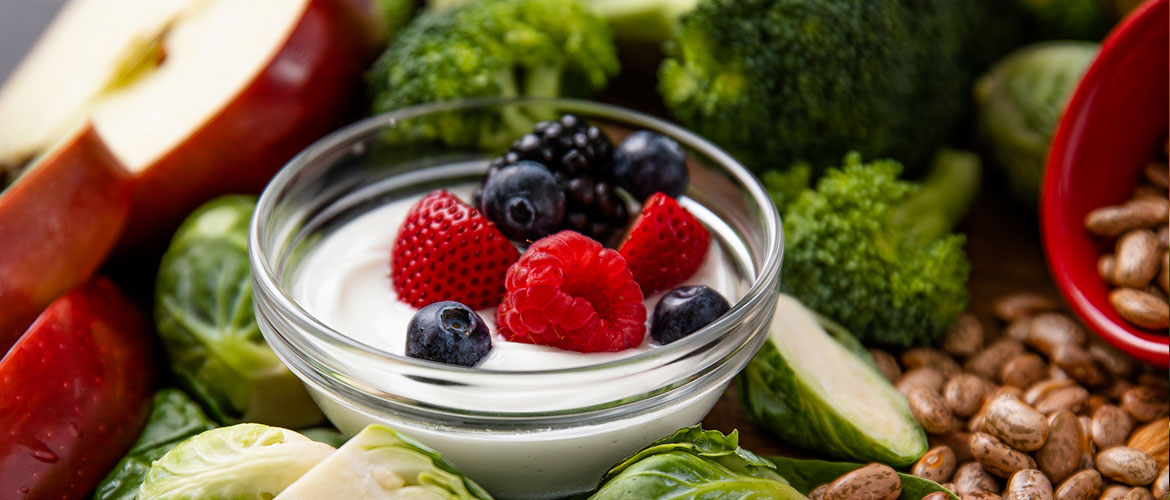We all wish there was a magic pill that would help us meet our health and wellness goals. And while those trendy diets your friends are sharing on social media may promise that quick fix you’ve always wanted, these diets often focus on the elimination of one or more food groups – a far cry from the overall healthy eating I strive to promote as a registered dietitian.
So, what should you make of the different diets that are out there? There are nearly 100 that have been reviewed on WebMD. How do you choose the diet that is right for you and your health and wellness goals?
Read below for the “skinny” on current diet trends.
Balanced Nutrition Is Missing From Trendy Diets
It’s important to keep in mind that all five food groups – fruits, vegetables, dairy foods, grains and proteins – play a role in a healthy eating pattern. Each food group provides unique nutrients that are important for overall health and well-being. For this reason, following a trendy diet that eliminates food groups could lead to nutrient deficiencies and other health problems. Though there is flexibility in which foods you choose within those food groups, any diet that eliminates an entire food group (or groups) should immediately throw up a red flag.
- While a dairy-free diet – such as Paleo or Whole 30 – might be trendy, the dairy food group contributes essential nutrients, such as protein, calcium and vitamin D. Not to mention eliminating grains and lentils in addition to dairy foods puts you at serious risk of missing out on the four nutrients of public health concern (those nutrients we already fall short on): calcium, vitamin D, potassium and fiber.
- The Ketogenic diet – originally developed as therapy for patients with epilepsy – is an extreme low-carb, high-fat diet. And just because it has shown some value as an effective diet for fast weight loss, that doesn’t make it ideal for everyone. In fact, U.S. News & World Report ranks it No. 37 for overall diet quality.
- A plant-based or plant-forward diet doesn’t need to exclude animal foods altogether. You can embrace the benefits of adding more plants (fruits, vegetables, whole grains, legumes, nuts, etc.) to your plate while still enjoying lean proteins and nutrient-rich dairy foods. Dairy foods make vital nutrient contributions to plant-based diets. In fact, milk provides 13 essential nutrients in every serving – including high-quality protein and vitamin B12 – to complement foods that are not a good source of these key nutrients, such as grains, fruits and vegetables.
Diets Backed by Science
While there is no one-size-fits-all approach to nutrition and health, decades of science support the Dietary Guidelines for Americans (DGA) and MyPlate, two well-balanced frameworks for healthy eating. The DGA supports three options for healthy eating patterns, including the Healthy U.S., Healthy Vegetarian and Healthy Mediterranean-Style. All three are grounded in science and support overall well-being. The DASH Eating Plan – which stands for Dietary Approaches to Stop Hypertension – is another popular science-supported option. Although it was originally developed and studied as a means of preventing and treating high blood pressure, weight loss is also likely to follow from this balanced, nutrient-rich diet.
Conclusion: Top-Line Considerations
- Make sure the “diet” you choose has sound science to support it
- Aim for balanced nutrition with MyPlate and all five food groups
- Look for a diet that is built around whole, nutrient-rich foods
- Don’t skip milk and delicious dairy foods – or the vitamin A, vitamin D, zinc, selenium and protein that come with them!
For more about healthy eating patterns vs. strict diets and rules, check out these practical tips from my colleague or learn how to cut through the fad diet clutter.




